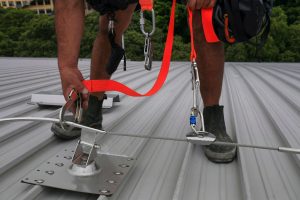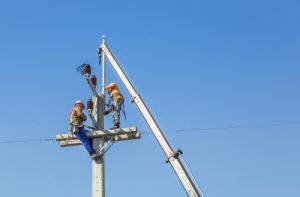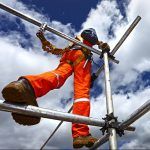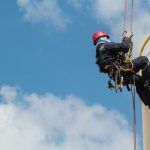
Top 5 Safety Tips for Working at Heights
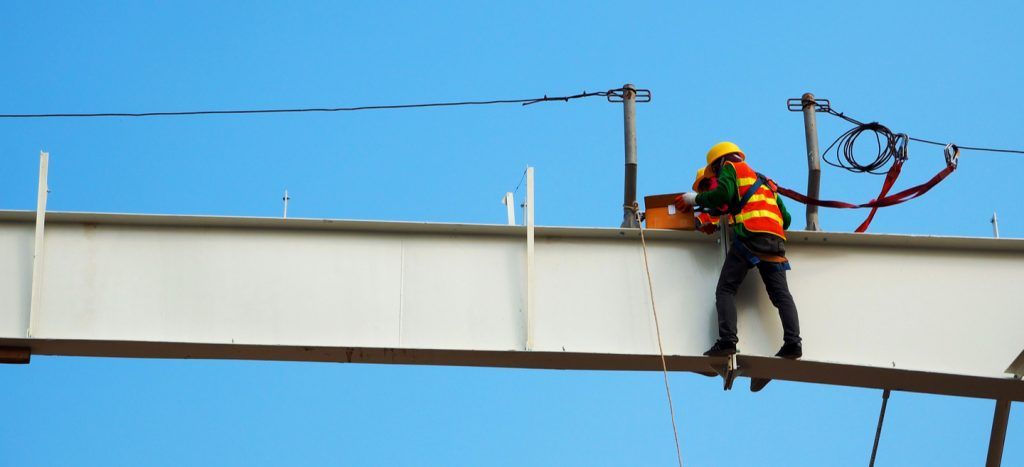
In 2015, companies spent over $52 million dollars paying compensation for workplace fall injuries alone. Falls are the leading cause of fatal accidents in the Ontario construction industry, and even the incidents that don’t result in a worker fatality have dire consequences that are life changing for the injured worker, and financially stressful for the employer. To help both employers and employees reduce the risk of a workplace fall injury, we have created a list of the top 5 safety tips that every business that has job duties that include working at heights.
1. Use the Proper PPE
All employees who work at heights are required to use a Personal Fall Arrest System (PFAS) to do their job. It is the responsibility of the employer to ensure that the proper equipment for the type of work that needs to be done is provided to employees. Not all PFAS are made the same. The cost of these systems can have quite a substantial difference between them. However, the brand name is not always the reason for the price increase. Some PFAS are made with better materials to be more durable, and support more weight, and protect against other hazards such as fire or electricity. The method of fall arrest can differ from system to system as well. Depending on your working conditions you may need fireproof material, an arc-safe design or extra D-rings to remain safe on the job, so make sure to fully understand the hazards that are present for the job, and always do some research and make sure you are getting the right PFAS to match the working conditions and protect against the hazards that are present. Never, ever skimp on fall protection equipment and always chose the best PFAS for your job regardless of the price.
2. Inspect Your PPE
Although using a Personal Fall Arrest System should prevent all falls there are issues with assuming that will always be the case. Occupational health and safety regulations require that all PPE used for working at heights be inspected and approved for use before an employee wears it and makes their way to the high location they are meant to work at. Always check harnesses and lanyards to see if the wear and tear could cause the system to fail. Make sure D-rings are functional and not rusted, and make sure that all straps and clasps stay tight. This must be checked prior to every use. The inspection needs be thorough. This brief pre-work check could save a life.
 3. Complete Regular Training
3. Complete Regular Training
In order to reduce the odds of a workplace injury, all workers who are performing work at heights must complete their Working At Heights Certification training and make ensure all relevant licensing is up to date. It’s important that all workers performing work at heights are aware of the risks involved with the task. It is also important for workers to be trained to use the specific fall protection equipment that they will be using on the job. They will need to retrain if the equipment changes, or they are found to not be fully competent in the use of the current equipment.
4. Be Cautious of Fragile or Slippery Surfaces
Always check the surfaces that your workers will be working on to ensure they are stable, and won’t break under the weight of a person standing on it. Even with the use of a PFAS, workers can still sustain injuries if the platform the are working on collapses under their weight. If the working platform is not stable, it needs to be replaced before work can continue.
Slippery surfaces on scaffolding or elevated platforms need to be considered as well. As is the case with unstable surfaces, an employee who slips and falls on an elevated platform can still sustain an injury, even with the use of a PFAS. Make sure that any employee who is working at heights is wearing proper footwear for the job and that measures are taken to reduce the slipperiness of the platform before sending workers up there to work.
5. Perform Risk Assessments Regularly
Awareness of the hazards and risks that are associated with the work being performed needs to be present at all times for both employers and employees. These hazards can change over the course of a project as well. By conducting a risk assessment regularly, new hazards can be identified and dealt with, and existing hazards can be reevaluated to ensure that the proper steps to mitigate, avoid or eliminate the hazard are being taken.
Advanced Training & Consulting Offers Working at Heights Training
What kinds of safety training courses related to Working at Heights do we offer here at Advanced Consulting & Training? We serve Ottawa, GTA and much of Ontario with a variety of course options, including:
Contact us today to find out how Advanced Consulting & Training can help you with a safe & proactive Working at Heights program.

